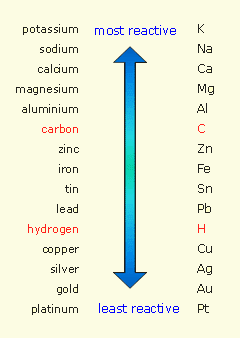How is the activity series of metals used to determine whether or not a single replacement reaction will occur?
2 Answers
A single replacement reaction only occurs when a metal higher on the activity series is replacing one lower on the series.
Explanation:
By definition, a single replacement reaction is one of the form
A + BC, where A replaces either B or C.
For example,
However,
In an activity series of metals, a metal can only replace a metal that is below it in the series.
Explanation:
In a single replacement reaction, a metal and a metal compound may react so that the metal will replace the metal in the compound, producing the replaced metal and a new compound with the original metal.
where
In order to determine whether this will actually happen, you consult an activity series of metals. An activity series of metals lists metals in descending order of reactivity. This means that a metal can only replace a metal below it in the series.

Example 1: Will the following single replacement reaction occur?
If we look at the activity series above, we see that copper is below zinc, so it cannot replace the zinc in the zinc nitrate compound. So this reaction will not occur. We would write it as:
Example 2: Will the following single replacement reaction occur?
If we look at the activity series, we see that aluminum is above copper, so this reaction will occur, and the aluminum will replace the copper to form aluminum sulfate.
The video shows an experiment to determine the placement of three different metals (Cu, Zn and Mg) on the activity series.
Video from: Noel Pauller"



